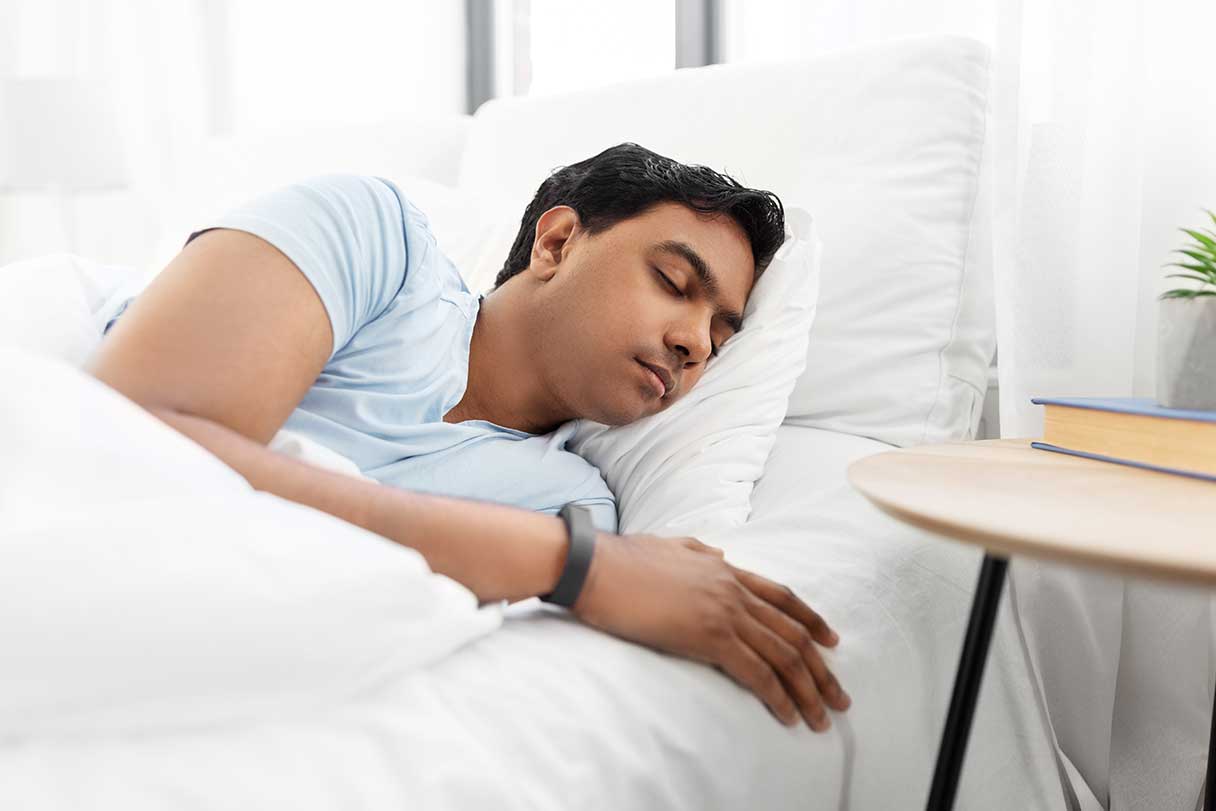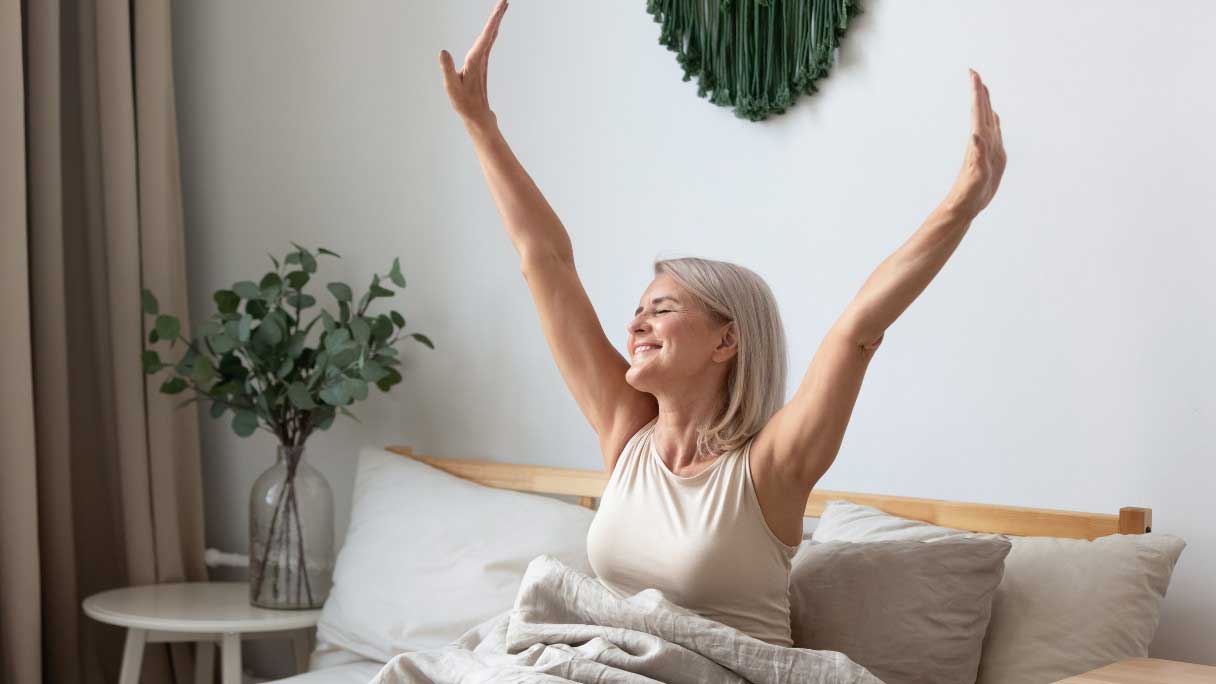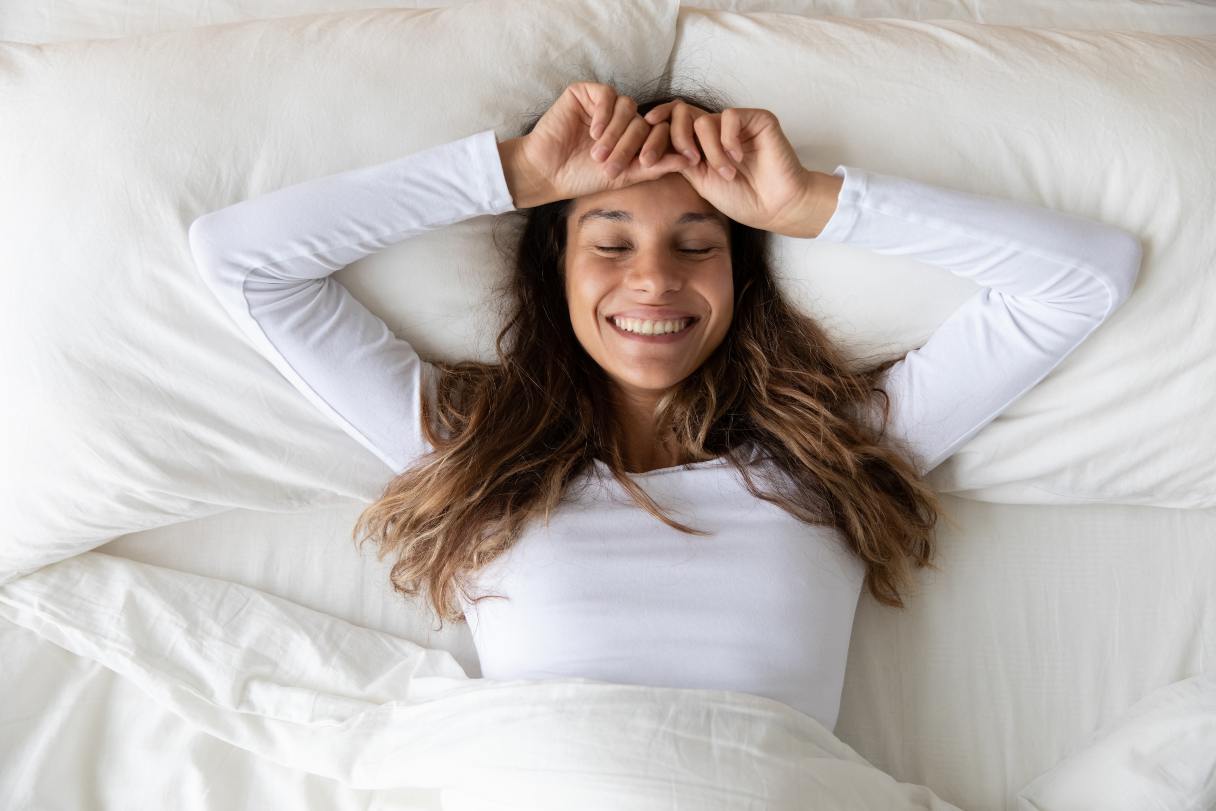If you toss and turn at night, feel fatigued during the day or simply don't get enough sleep, you're not alone. Around 35% of adults in the United States get fewer than seven hours of sleep per day.1 Of those who have trouble sleeping, around 425 million adults between the ages of 30 and 69 suffer from a moderate to severe form of a potentially serious breathing disorder known as sleep apnea.2
To determine whether your sleep apnea or another sleep disorder is causing your restless nights, your doctor may recommend the use of a sleep tracking device or an at-home sleep monitoring test. Below, we dive into how the different types of home sleep monitoring devices work, if insurance covers them and how to finance their costs.
What Is a Sleep Monitor?
Home sleep monitors, also known as sleep trackers, collect information that can reveal patterns in your sleep habits. These monitors may be wearable devices like a wristwatch, ring or headband; they may also be non-wearable monitors that rest on the mattress, clip to a pillow or sit on a nightstand or bedside table.3
While their features vary, these devices often contain sensors that detect physical signs or activity during sleep, such as:4
- Heart rate
- Respiration rate5
- Blood oxygen levels
- Body movement
- Snoring5
- Ambient noise in the environment5
- Brain activity
- Body temperature
This data is tracked, recorded and analyzed to determine various information like sleep duration, sleep quality, sleep phases and environmental or lifestyle factors that can impact your sleep. The information collected is typically available to you via an app.3
Types of Sleep Monitors
As mentioned above, there are various kinds of sleep monitoring devices that will track your basic vitals and store the information collected in an app to help you track your sleeping patterns and the quality of sleep you are getting. Additionally, these devices usually have features like GPS and fitness tracking.5
Some types of sleep trackers include:5
- Watches
- Rings
- Headbands
- Eye masks
- Other wearables
- Under-mattress devices
Prescription Sleep Monitors
While sleep trackers don't require a prescription to purchase, the devices used in an at-home sleep apnea test do. The test involves using portable FDA-approved medical devices similar to sleep trackers that monitor your breathing and other vitals as you sleep.6 Generally, you return the equipment to your doctor after the test.7
Prescription sleep devices typically include a:7
- Breathing sensor, which tracks your breathing throughout the night via nasal cannula or prongs
- Effort belt that wraps around the chest and/or abdomen to monitor breathing and determine if you have obstructive or central sleep apnea
- Pulse oximeter that determines how much oxygen is in your blood
- Microphone that records snoring
- Data collection devices that store information about your sleep patterns and breathing
How Much Does a Sleep Monitor Cost?
A sleep tracker averages in price from $30 to $609, with some requiring additional monthly subscription costs to use. These subscription costs range from $5.99 to $30 per month and can drive up the cost of your sleep tracker over time.4
The average cost of an at-home sleep monitoring test ranges between $150 and $1,000 or more, depending on the equipment used.8
Cost of sleep monitors by type
| Type of sleep monitor | Average cost |
|---|---|
| Wrist sleep tracker | $30 to $3994 |
| Smartwatches | $100 to $800+9 |
| Under-mattress trackers | $13010 |
| Smart rings | $299 to $6094 |
| Headbands | $399.99 to $444.984 |
| Prescription devices (sleep test) | $150 to $1,0008 |
Several factors will affect the cost of the home sleep monitoring device that you choose or that your doctor prescribes for you.
- Features: Sleep trackers with more extensive capabilities, that are less obtrusive and have a longer battery life often cost more than those available without a prescription.
- Uses: Many sleep devices can only be used to gather sleep data. More extensive tools, such as smartwatches, have uses outside of sleep tracking, warranting a higher price tag.
- Subscription costs: Many devices require a monthly or annual subscription cost.4
- Prescription required: Sleep monitoring devices used in at-home sleep tests typically cost more than sleep trackers and cannot be reused.7
- Rental costs: Some prescription devices require a rental fee, which may vary based on equipment provider.11
Also, keep in mind that your doctor may charge additional costs for interpreting your results from an at-home sleep test device they prescribe.8
Are Sleep Monitors Covered by Insurance?
Most health insurance companies don't cover the cost of nonprescription devices like sleep trackers.12 That's because they are not classified as medical devices but rather consumer wellness products.13 That's why you can purchase these products yourself without a prescription from a doctor.
However, a prescription home sleep test, including the cost of the device, is typically covered by your health insurance provider if your doctor believes it is medically necessary to diagnose sleep apnea.7
Both Medicare and Medicaid cover at-home sleep tests; Medicare will cover the cost at 80% after you reach your deductible. Private insurance company coverage will vary, so check with your provider to see if they will cover the cost of your at-home sleep test.8
Why You Might Need a Sleep Monitor
Sleep monitors help determine your sleeping patterns and whether or not you could be suffering from a sleep disorder like sleep apnea.
Based on the information the sleep trackers provide, your doctor will order an at-home sleep test if they feel that there is a good chance you have obstructive sleep apnea based on your symptoms and sleeping patterns. Obstructive sleep apnea is a medical condition that causes you to stop breathing for short periods of time while you're asleep due to a full or partial collapse of the upper airway.2
When left untreated, sleep apnea can lead to a heart attack, stroke, irregular heartbeat and an increased chance of being involved in a motor vehicle accident.14 Fortunately, treatment with a continuous positive airway pressure (CPAP) machine will help ease your symptoms and provide more restful sleep, which is why a proper diagnosis is so important.7
Candidates for Sleep Monitoring
Those who have trouble sleeping and are experiencing symptoms of sleep apnea or other sleep disorders are good candidates for sleep monitoring. These symptoms include:14
- Snoring
- Dry mouth
- A headache upon waking
- Choking or snorting during sleep
- Sleepiness or difficulty concentrating during the day
While sleep trackers can help those with mild sleeping issues, if your doctor suspects a very serious medical condition as their cause, they may recommend an in-lab sleep test known as polysomnography (PSG). It can test for a variety of serious sleep disorders like narcolepsy, insomnia, restless leg syndrome, sleepwalking and sleep-related movement disorders.15
How Does Sleep Monitoring Work?
Different sleep trackers use different types of technology to measure the quality and quantity of your sleep. They typically include:4
- An accelerometer to detect vibrations and movement
- Heart rate and body temperature sensors to determine when you fall asleep and how long you spend in each phase of sleep
- EEG sensors to monitor your brain activity as you fall asleep and during sleep
How to Prepare for Sleep Monitoring
There's really no preparation for using a sleep tracker, although some sleeping tracker apps allow you the option to enter in whether you have had any caffeine or alcohol during the day before your bedtime, which could affect your results for the night.3
It's best to prevent anything that may affect the results of an at-home sleep test prescribed by your doctor. Prior to your sleep test:7
- Don't drink alcohol.
- Don't drink beverages containing caffeine.
- Speak with your doctor to see if you can take any sleep medications you are prescribed.
How to Use a Sleep Monitor at Home
Using a sleep tracker is relatively easy:5
- You wear the device and go to bed as you normally would.
- Some devices may detect your sleep automatically, while others may require you to notify the app before and after you sleep.
- In the morning, the results will be available to you via an app.
- Over time, the app will give you a detailed report of your sleep patterns and give you tips on better sleep or alert you if you need to see your doctor.
What Is the At-Home Sleep Test Procedure?
If you are experiencing serious problems with your sleep based on the results of your sleep tracker, your doctor may refer you to a sleep specialist to conduct an at-home sleep test. Should your sleep specialist order an at-home sleep test for you, they will give you a prescription testing device, similar to a sleep tracker. You'll need to take the device and attach it at your normal bedtime.7
After you are ready for bed, you will:7
- Place the pulse oximeter on your finger or earlobe.
- Insert the nasal cannula into your nostrils.
- Strap the effort belt around your chest or abdomen.
- Start the data collection device.
- Sleep through the night as you normally would.
- Stop the data collection device in the morning and remove the rest of the equipment.
Once you do the test, you'll need to return the equipment to the sleep center where you obtained it, or dispose of it if it is meant for one-time use. Your sleep specialist will review your results with you.7
Is Sleep Monitoring Safe?
While sleep trackers are generally considered safe, they are not categorized as medical devices.13 Also, they are not always completely accurate in their results.3 However, the information they provide can be a valuable tool to share with your doctor to see if a more in-depth sleep study could be required.3
The devices used for at-home sleep studies are FDA-approved.16 They can diagnose obstructive sleep apnea, but if you suffer from another sleep disorder, you'll need further in-lab sleep testing to determine the cause.7
Both sleep trackers and prescription sleep monitoring devices can give you and your doctor insight on if you suffer from some type of sleep disorder, what you can do to alleviate it and if further testing is necessary to keep you healthy and well-rested.
Financing Sleep Monitors With the CareCredit Credit Card
If you are looking for an option to help manage your health and wellness costs, consider financing with the CareCredit credit card. The CareCredit credit card can help you pay for the care you want and need and make payments easy to manage.* Use our Acceptance Locator to find a provider near you that accepts CareCredit. Continue your wellness journey by downloading the CareCredit Mobile App to manage your account, find a provider on the go and easily access the Well U blog for more great articles, podcasts and videos.
Your CareCredit credit card can be used in so many ways within the CareCredit network including vision, dentistry, cosmetic, pet care, hearing, health systems, dermatology, pharmacy purchases and spa treatments. How will you invest in your health and wellness next?
Author Bio
Susan Paretts is a freelance writer with 19 years of experience covering health and wellness, pet care and more. Her work has been published by the American Kennel Club, Bayer Animal Health, Elanco, LIVESTRONG.com, The San Francisco Chronicle, Chewy and more.








